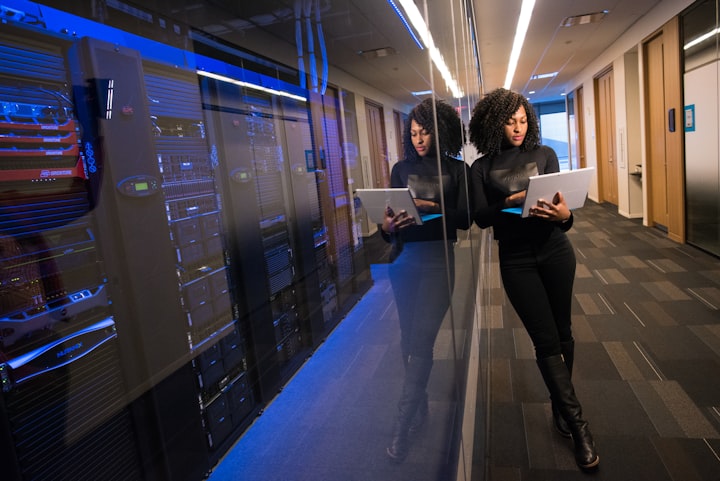How Digital Technology is Shaping The Future of Education?
A sneak peek into the future of education and learning

Digital technology is rapidly transforming the education and market environment. New companies must transform the way they plan, produce and analyse learning to succeed in today’s ever-evolving industries.
We are going to highlight five technologies in this article which drive the digital transformation and disrupt the learning and education sector. We will also discuss realistic approaches used by creative companies to incorporate these innovations into their training and growth programmes.
1) Augmented Reality (AR):
Educational facilities that use the new AR technologies both in the classroom and in field trips can provide an entirely different learning experience for the children of today. This will help kids to contribute to greater engagement in training and learning.
It would be difficult for colleges, educators and educational organisations to deal with the demands of children if they fail to change themselves, their AR-based curriculum in order to embrace a modern approach to education.
Usage of Microsoft Hololens will be the next big thing in education in 2021 and beyond.
2) Virtual Reality (VR):
VR was – of course, one of science fiction’s delights: writers get to dream about science and technology’s future and their readers get to look back and assess how correct their forecasts were.
We’re not here to write science fiction, of course, but it’s not impossible to imagine even while this technology is being implemented, we’re going to see it being used in ways that we never thought.
That is true of virtually all technology. As smartphones first hit the scene, the majority of consumers found them to be high-tech phones that could access the Internet. None anticipated how the integration of purpose-built mobile applications, social media, and pocket video tools will change how we interact and experience the world with each other.
Most VR hardware today depends on bulky headgear. Yet cameras used to be unwieldy too, so we are now keeping them in our pockets. Likewise, it will be exciting to see how we interact with our world that is transformed by virtual reality, augmented reality, and other amazing accomplishments.
Platforms like Engage VR is changing the planet with introducing amazing features to leverage VR for learning, training and education.
3) Artificial Intelligence usage in Grading:
Homework marking and reviewing for large lecture courses can be boring work in class. Particularly in lower grades, teachers often feel testing taking up a significant amount of time, time that should be used to communicate with pupils, to plan for college, or to focus on career development.
While AI will never be able to completely substitute human marking, it is getting pretty close. Teachers will now automate grading for nearly any form of multiple option, and fill-in-the-blank checking and automatic grading of student writing will not be far away. To create questions, they can use an AI-based question generator like "Quillionz" to speed up the process too.
4) IoT usage:
IoT is used in many sectors including banking, transport, education, telecommunications, etc. A digital IoT system for schools and colleges aims to keep track of big tools, build intelligent lesson plans, develop safe campuses, enhance access to knowledge and more. Examples of this include Promethean interactive displays and Blackboard, a connected learning experience and virtual classroom technology
5) Cloud Computing:
As digital technology infuses higher education, many universities switch to cloud-hosted learning management systems (LMSs), which link student databases to learning content. Cloud computing also offers a viable alternative for computational simulation, data collection and visualisation, allowing cooperation with other scientists. Cloud computing is an inexpensive tool which allows for fast processing, broad data storage space, and resource sharing. It provides scientists with versatility, ease of data collection, repeatability of work and teamwork while reducing maintenance requirements. The benefits of cloud computing greatly outweigh the problems created by the use of this new technical platform. One can even create a cloud PC with using a platform like “Paperspace” online.
Conclusion:
Using AI frameworks, apps, and resources, students can learn from anywhere in the world at any time, and with these services taking the place of other forms of classroom teaching, AI can also replace teachers (for better or worse) in certain cases. AI-powered instructional programs also help students learn fundamental skills, but as these systems expand and creators learn more, they will undoubtedly provide a much broader variety of resources to students.
About the Creator
Srinidhi Ranganathan
I hold a degree in English Literature. I love reading books and writing is my passion. "Dream of Rainbows" is my first book for children. I love to write fiction, non-fiction and blog articles on popular topics. Happy reading!






Comments
There are no comments for this story
Be the first to respond and start the conversation.